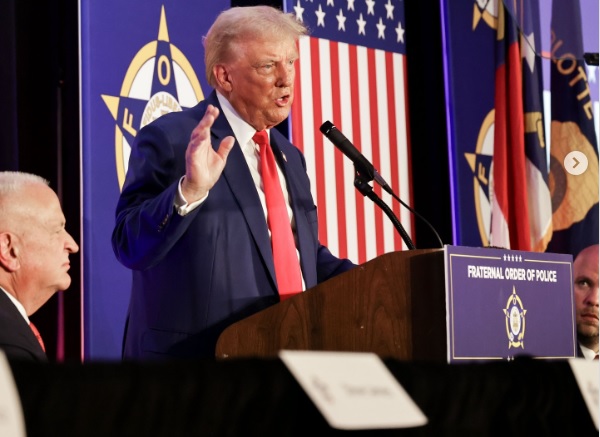
(Photo : Donal Trump / Instagram)
Donal Trump
- The New York Times' 'Needle' projected an 84% chance of a Trump victory in the 2024 elections, despite a strike by its tech workers.
- The 'Needle' uses real-time data, demographic, and historical data to make its projections.
- The newspaper acknowledged that the strike could affect the stability of their election forecast systems.
- This situation highlights the complex relationship between politics, technology, and labor rights in the digital age.
The New York Times' election prognosticator, famously known as the 'Needle', recently projected an 84% chance of a Donald Trump victory in the 2024 elections. The projection was based on data available at 10:30 p.m. Tuesday (9 a.m. Wednesday in India), with Trump estimated to secure about 295 electoral college votes. The 'Needle' operates by analyzing incoming data in real-time and making projections it deems valid at that moment.
Interestingly, the 'Needle' showed a fluctuation in its projections. A little before 10 p.m., it showed Trump at nearly 290 seats before swinging down five to 285 at 10 p.m. and rising 30 minutes later to 295. The 'Needle' makes longer-range projections beyond those made by The Associated Press and networks like NBC and Fox News by combining the incoming polling trends with demographic and historical data.
At 10 p.m., the electoral college votes that had been called by the media were 198 for Trump to 112 for Harris. However, the New York Times was grappling with its computer systems because its union of technology workers was on strike over pay and working conditions.
The Impact of the Strike on Election Projections
The newspaper acknowledged the problem and wrote, "Publishing the 'Needle' live on election night relies on computer systems maintained by engineers across the company, including some who are currently on strike". The newspaper further stated that the display of their election forecast would depend on the stability of those systems, as well as incoming data feeds. They would only publish a live version of the 'Needle' if they were confident those systems were stable.
Despite the technical issues, the newspaper seemed confident of the system's ability to handle the projections. On the eve of the election, the newspaper's poll had given Harris a 3% lead over Trump. However, the RealClear Polling's aggregation had Trump with a 0.6% lead, which is a virtual tie.
This situation is reminiscent of the 2016 U.S. presidential election, where the digital age significantly affected news and cultural narratives. People tend to seek information that aligns with their views, making them vulnerable to misinformation.
Strikes and Labor Rights in the Digital Age
In the context of labor rights, the New York Times' technology workers' strike is not an isolated incident. Over the past decade, there have been numerous instances of workers' strikes across various sectors, from auto workers to graduate students, demanding better pay, benefits, and working conditions. These strikes have often resulted in significant disruptions to operations and have highlighted the growing tensions between employers and employees in the digital age.
* This is a contributed article and this content does not necessarily represent the views of btin.co.in









